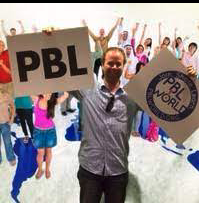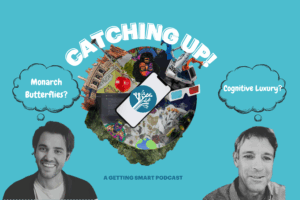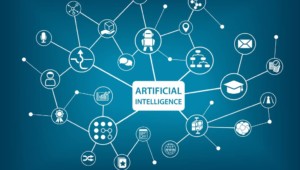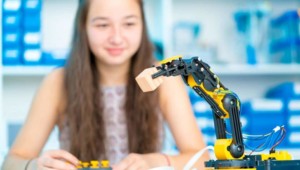The Rise of the Machines
Key Points
-
The rise of machines will continue to make us self-reflect on the role of the human.
-
AI has the potential to enable us to think less about product and more about process.

“AI is not going to replace managers but managers that use AI will replace those that do not.” – Rob Thomas, Senior Vice President at IBM
This same sentiment from the above quote can be applied to teaching. In fact, the best place for AI is probably in schools, where students are educated to live with it and are taught about their digital footprint.
The effects of generative AI on knowledge work are unprecedented and there is a radical shift in the way white-collar and analytical work is conducted. AI cuts time, improves outputs, and outsources the boring stuff so work is more enjoyable. We are increasingly algorithmically shaped, and our competitive advantage is our ability to offer value beyond an algorithm. AI will take care of the rote and mundane so we can focus on higher-order skills. Generative AI provides us with a ‘brainstorming partner’ and turbocharges our ability to focus on soft/success skills. The robots can do the robotic stuff so we can be more human.
Shifting Priorities
A predictable education system is increasingly vulnerable to automation, with students soon likely to advocate for AI to double-mark public examinations due to its accuracy and speed. While many schools are scrambling to redesign assessments to make them AI-proof, other educators are lifting expectations of what AI now makes possible – innovating instead of renovating. An example of this can be seen at Verso International School in Thailand, where Dr. Thomas Tran has designed a philosophy project inspired by the Humans of New York series. Addressing the driving question “How does the impression you want to leave influence the life you want to live?”, learners gathered perspectives and exhibited drafts of artwork using the AI image generator Midjourney through creative and descriptive writing to create their representations. The project culminates in an exhibition of artworks, photographs, and videos at the Bangkok Arts and Culture Centre.
Learning is most effective when students feel supported and form meaningful relationships. Catherine McClellan from the Australian Council for Educational Research says, “You’re never going to have a relationship with ChatGPT. You’re never going to be friends with it. It’s not going to know how they did at the football game last night. So, I believe that piece is always going to be human to human.” When the teacher-student relationship is based on collaboration and trust, with the teacher acting as a coach and the student as a producer, AI can be a powerful asset. Conversely, when the relationship is transactional and adversarial, AI can become a weapon of conflict. A punitive approach to enforcing academic integrity strains the relationship between teachers and students.
Personalized Learning
The Latin root word for assessment is ‘assidere’, which means “to sit beside”. How might AI enable us to sit beside learners and conduct powerful conversations about their thinking, so that assessment is more a conversation than a number? AI can provide personalized feedback and shift our focus from finished product to process. It could analyze student conversations, detect learning moments, and create visual representations of them, as well as identify patterns in student questions and virtually coach them to ask better questions.
By leveraging AI, artist-scientist Michelle Huang was able to create a time portal to her childhood. After keeping diaries for 10 years, she trained AI on her journal entries, allowing her to converse with her “inner child”. The AI-simulated responses felt as if they were coming from her younger self. She used it as a tool for self-insight. Envision a future in which, instead of childhood journals, the corpus is learning reflections gathered throughout schooling; the data footprint is the basis for a personal AI assistant, allowing students to have conversations about their learning experiences that help them build self-awareness and gain insights into their thinking and behavior patterns. AI could predict a young person’s future examination results and career paths, providing a powerful tool for educators to shape and guide students’ futures.
Mental Models
AI can’t yet replicate our curiosity, creativity, or critical thinking, but it will disrupt most jobs and lead to deeper social, dispositional, and pedagogical shifts. Our role is to prepare young people to live and prosper in a world increasingly run by technologies. Students need adults who will help them to understand the capabilities of modern technologies and how to utilize them safely and effectively in both their personal and professional lives. Policies should be adaptive, flexible, and responsive, prepared for a never-ending deluge of new technologies.
Professor George Siemens, director of the Centre for Change and Complexity in Learning at the University of South Australia, argues that in this era of supercomplexity and rapid change, ‘Beingness’ should be the central attribute of education. Beingness is attending to the core human condition – not what we know but who we are. The shift is from epistemology (knowing) to ontology (being).
It will be tricky while we learn to be AI compatible and rely on backup memory. Just as previous generations learned to work with different cultures and genders, the next generation will learn to work with AI and robots. Young people, who are better equipped to understand the opportunities AI provides, will lead the charge in developing new, innovative ways to utilize it. In the longer term, our view of what it means to be human is going to have to change and, at present, we don’t yet have mental models for such a shift.







0 Comments
Leave a Comment
Your email address will not be published. All fields are required.